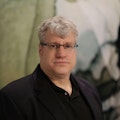Petro Matad Ltd. reached total depth (TD) at the Heron-2 well in Block XX in Tamsag basin, eastern Mongolia, in preparation for a well test by end-October. This is the first development well to be drilled on the Petro Matad-operated Heron field.
Heron-2 is being drilled by the DQE International rig 40106 and is about 800 m south of Heron-1 (OGJ Online, Sept. 9, 2024). The well reached 2,908 m TD 7 days ahead of schedule. It encountered the Cretaceous Lower Tsagaantsav formation primary target.
Oil and gas shows were observed from the top of the formation and an 18-m thick interval of sandstone was penetrated in a similar stratigraphic position to the sandstone in Heron-1 that flowed good oil rates on well test. This interval was encountered at a depth of 2,816 m in Heron-2, 16 m shallower than in Heron-1. Drilling mud was lost to the formation at the top of the unit, as it was in Heron-1, indicating a zone with good permeability.
Petrophysical evaluation of the wireline logs indicates that oil is present to the base of the sand and with net oil pay of more than 5 m. Log correlation indicates that the sandstone is likely to be the same stratigraphic unit as the one tested in Heron-1. It also has similar log calculated porosity.
Casing has been run to TD and preparations are being made for a well testing and stimulation program over the pay zone. The well would be put on production if the well tests at commercial flow rates. Well test operations are expected to be completed during October.
About the Author
Alex Procyk
Upstream Editor
Alex Procyk is Upstream Editor at Oil & Gas Journal. He has also served as a principal technical professional at Halliburton and as a completion engineer at ConocoPhillips. He holds a BS in chemistry (1987) from Kent State University and a PhD in chemistry (1992) from Carnegie Mellon University. He is a member of the Society of Petroleum Engineers (SPE).
